Jump To Section
Acne is one of the most common skin conditions worldwide, affecting millions of individuals, especially during adolescence. While acne itself can be challenging to deal with, the scars it leaves behind can have a long-lasting impact on one’s skin and self-esteem. Fortunately, understanding acne scarring, its causes, and the different types of scars can help in both prevention and treatment. In this comprehensive guide, we’ll explore the healing process, common types of acne scars, tips for prevention, and available treatments to help you restore smooth, clear skin.
What is Acne Scarring?
Acne scarring occurs when acne lesions – whether they are pimples, cysts, or nodules – cause damage to the skin. After the acne heals, the damaged tissue can result in visible scars. The severity of the scarring depends on factors such as the type of acne, its duration, and how the skin responds to healing. Acne scars can appear as depressions or raised areas and are often classified into different types based on their appearance and the depth of the damage caused to the skin.
The Healing Process and Why Scar Formation Occurs
When an acne lesion forms, it causes inflammation and affects the surrounding skin tissue. As the pimple or cyst heals, the body produces collagen to repair the damaged tissue. In some cases, the body either produces too much collagen (leading to raised scars) or not enough (leading to depressed scars). The result is the formation of acne scars that can be more or less noticeable depending on the severity of the damage.
Scarring occurs when the skin’s natural healing process is disrupted. This can be due to factors such as:
- Picking or squeezing acne lesions: This increases the risk of infection and further damage to the skin.
- Severe inflammation: Inflammatory acne, such as cysts or nodules, tends to leave more noticeable scars due to the deep damage it causes.
- Delayed treatment: Acne left untreated for a long period can cause more significant tissue damage, increasing the likelihood of scarring.
- Genetics: Some individuals are more prone to developing scars due to their genetic makeup and how their skin heals.
Now, let’s delve into the different types of acne scars and how they appear on the skin.
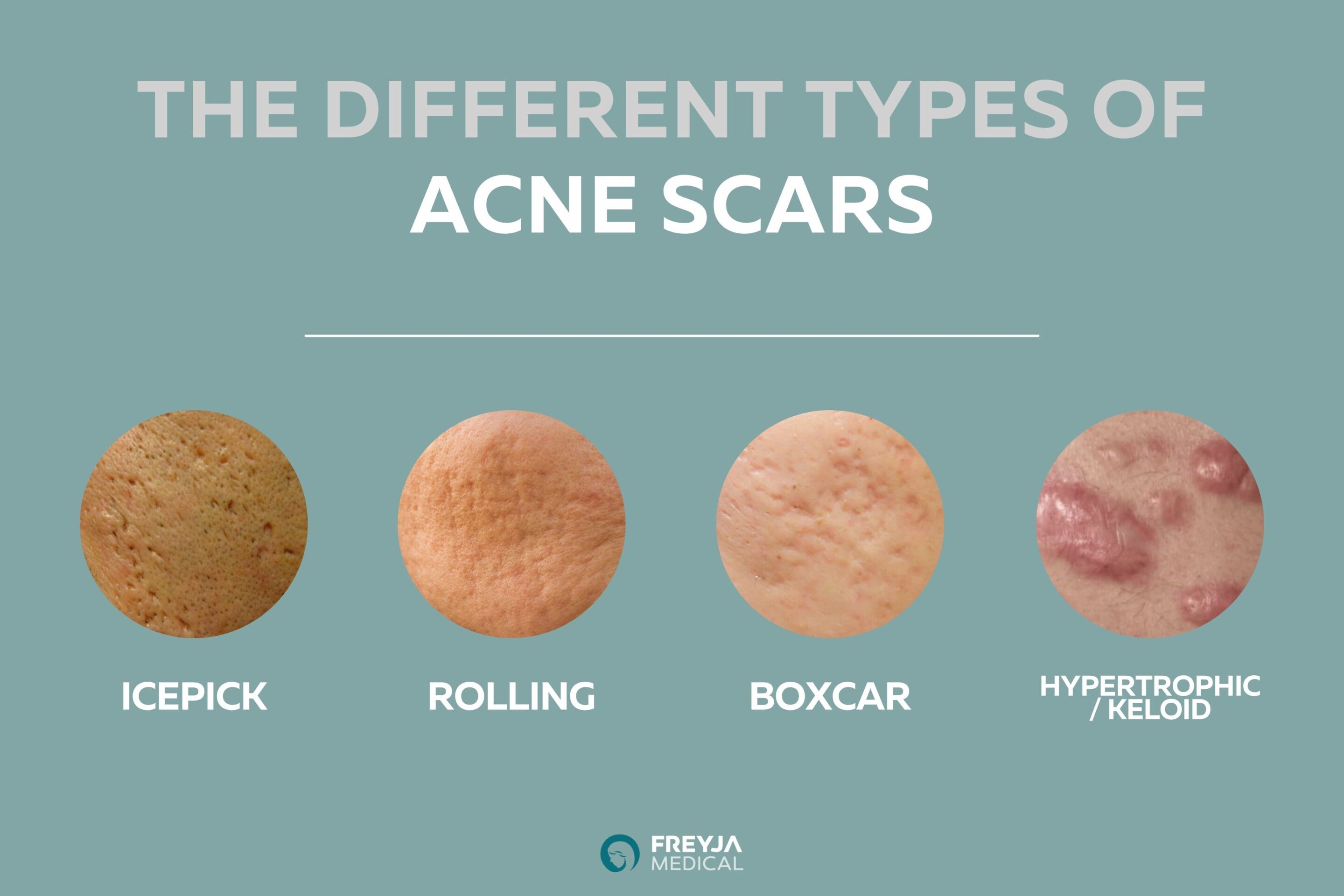
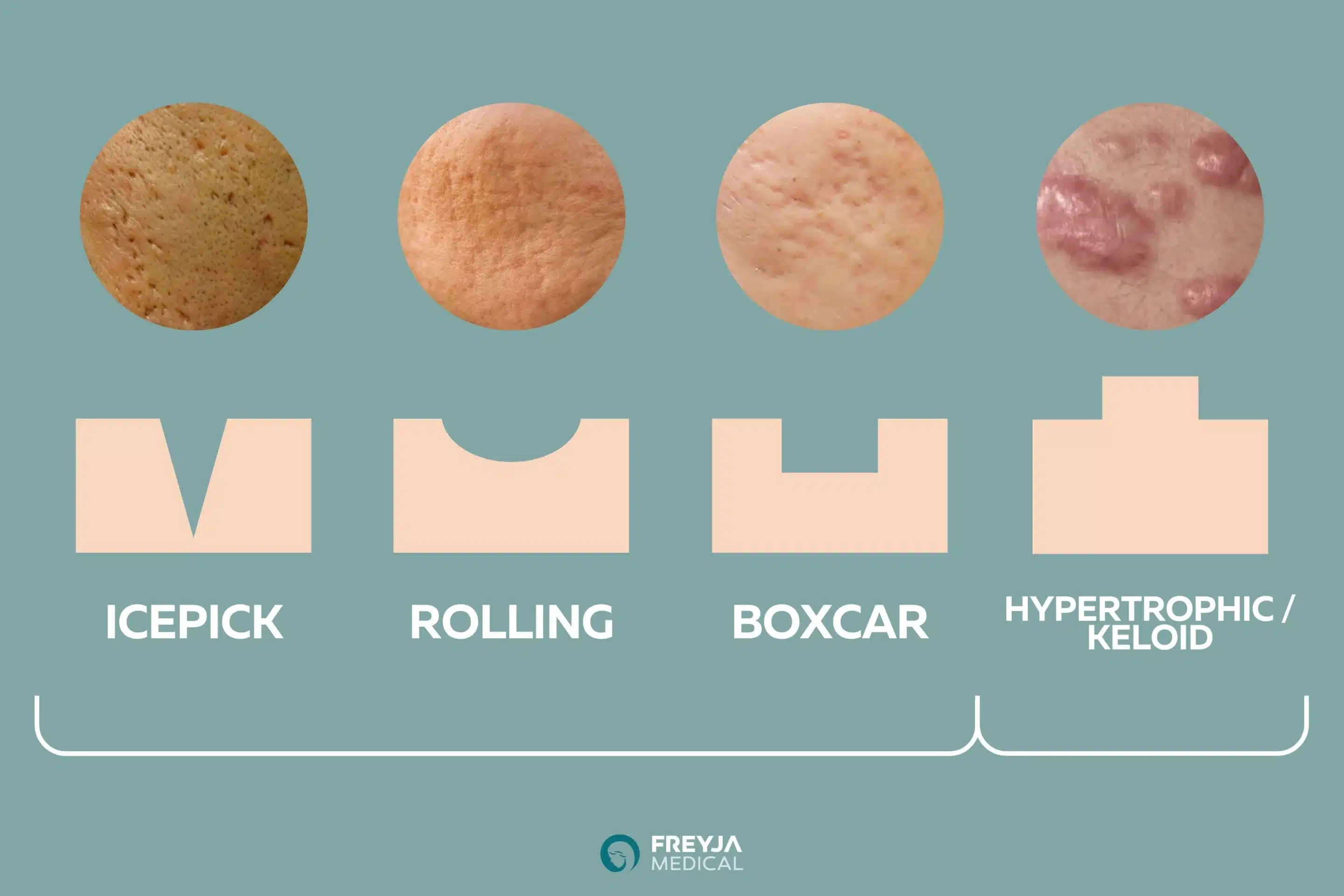
Icepick Scars
Definition and Appearance
Icepick scars are narrow, deep pits that resemble small holes or divots in the skin. These scars are usually sharp and steep-sided, often extending deep into the dermis (the second layer of skin). Icepick scars are one of the most difficult types of scars to treat due to their depth.
Causes
Primarily caused by severe acne, particularly cystic acne. They form when inflammation destroys skin tissue, leaving deep, narrow scars.
Common Locations
Icepick scars typically appear on the cheeks and forehead, although they can occur anywhere on the face. These scars are more common in individuals with severe acne that has been left untreated or improperly treated.
Rolling Scars
Definition and Appearance
Rolling scars create an undulating, wave-like appearance on the skin. They are typically broad and shallow, causing the skin to appear uneven. The edges of rolling scars are not as defined as other scar types, giving them a more subtle, yet still noticeable, appearance.
Causes
Rolling scars are caused by the destruction of collagen and tissue beneath the skin’s surface. Unlike icepick scars, which affect only the epidermis (the outer layer of skin), rolling scars are the result of subcutaneous damage to the deeper skin layers. This causes the skin to sink or roll into depressions.
Common Locations
Rolling scars are most commonly found on the cheeks, though they can also appear on the chin or jawline. They tend to be more common in individuals with long-term, untreated acne or acne that has been poorly managed.
Boxcar Scars
Definition and Appearance
Boxcar scars are round or oval depressions with sharply defined edges. They are often wider than icepick scars and have a more angular appearance. Boxcar scars can vary in depth, but their defining feature is the well-defined edge, which sets them apart from other types of scars.
Causes
Boxcar scars form when an inflammatory acne lesion destroys skin tissue and causes damage to the dermis. This leads to a loss of tissue in the area, resulting in a pitted appearance with angular edges.
Common Locations
Boxcar scars are typically found on the cheeks and jawline but can also appear on the forehead or chin. They are more common in people with moderate to severe acne.
Hypertrophic Scars
Definition and Appearance
Hypertrophic scars are raised, thick scars that form as a result of excessive collagen production during the healing process. These scars are often red or pink and are firm to the touch. They are similar to keloid scars, but hypertrophic scars do not extend beyond the original injury site.
Causes
Hypertrophic scars are caused by the body’s overproduction of collagen during the healing of a wound or acne lesion. When acne is particularly inflamed, the body may produce too much collagen in an attempt to repair the damage, leading to a raised scar.
Common Locations
Hypertrophic scars are most commonly found on the chest, shoulders, and back but can also appear on the face in cases of severe acne.
Keloid Scars
Definition and Appearance
Keloid scars are raised, thick scars that grow beyond the original site of injury or acne lesion. They are often dark in colour (ranging from red to brown) and may be itchy or painful. Keloids can be larger than hypertrophic scars and can extend well beyond the affected area.
Causes
Keloid scars are caused by an overproduction of collagen, similar to hypertrophic scars, but they extend beyond the original wound area. They are more likely to develop in individuals with a genetic predisposition to keloid formation.
Common Locations
Keloid scars can form anywhere on the body, but they are most common on the chest, shoulders, and ears.
Tips for Preventing Acne Scars
While it may not always be possible to avoid acne scars completely, there are several ways to reduce the risk:
Don’t Pick or Pop
Think of pimples as no-touch zones. Picking and popping might be tempting, but it’s like poking an angry dog—it makes everything worse and can lead to scarring. Let your skin heal naturally and avoid further irritation or infection.
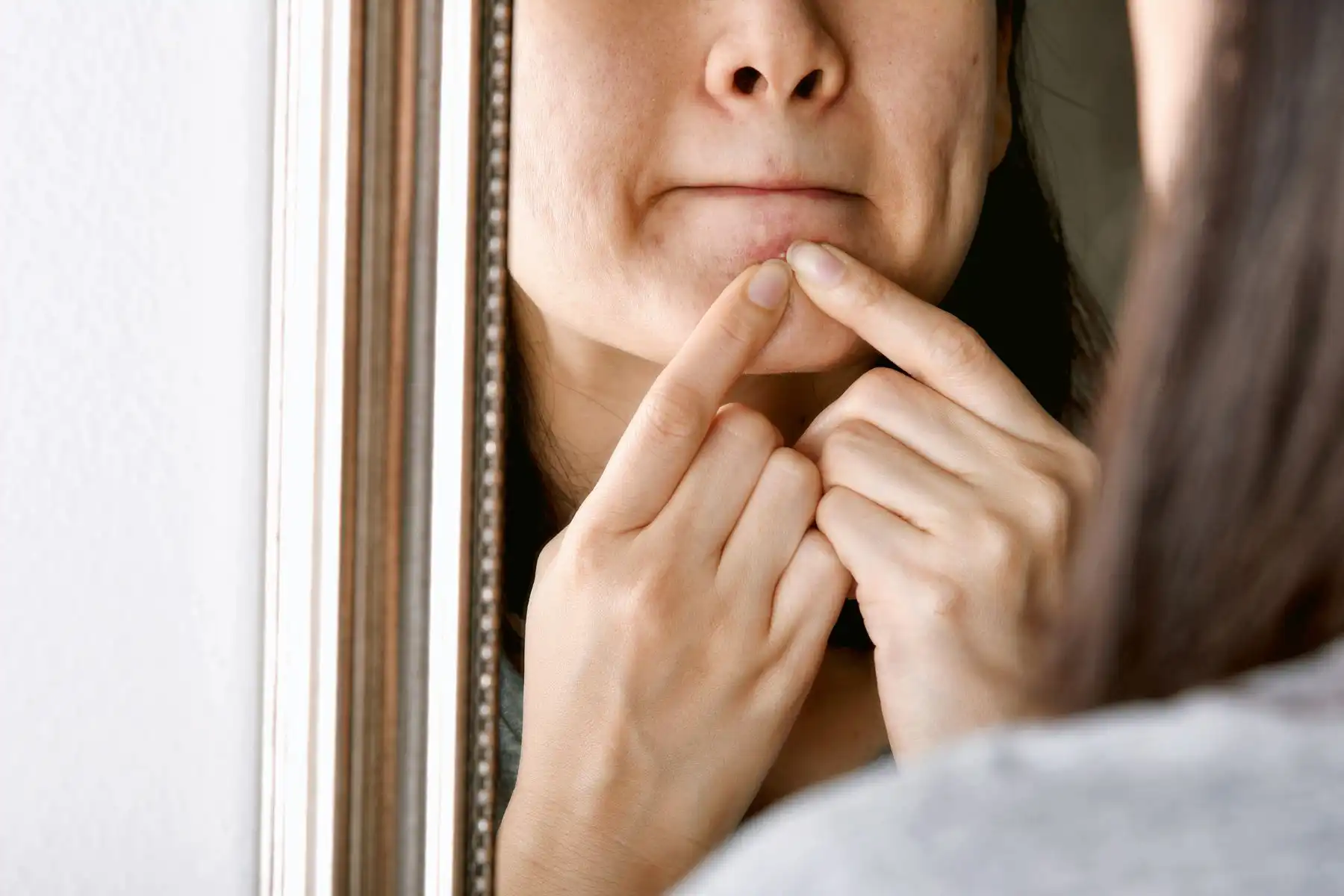
Follow a Skincare Routine
Adopting a gentle skincare routine is key to preventing scarring. Over-cleansing or using harsh products can irritate the skin, worsen acne, and increase the risk of scarring. Stick to non-comedogenic products and avoid scrubbing acne-affected areas too harshly.
Click here to learn more about what ingredients matter most in acne products.
Or click here to learn more about our recommended acne products here at Freyja Medical.
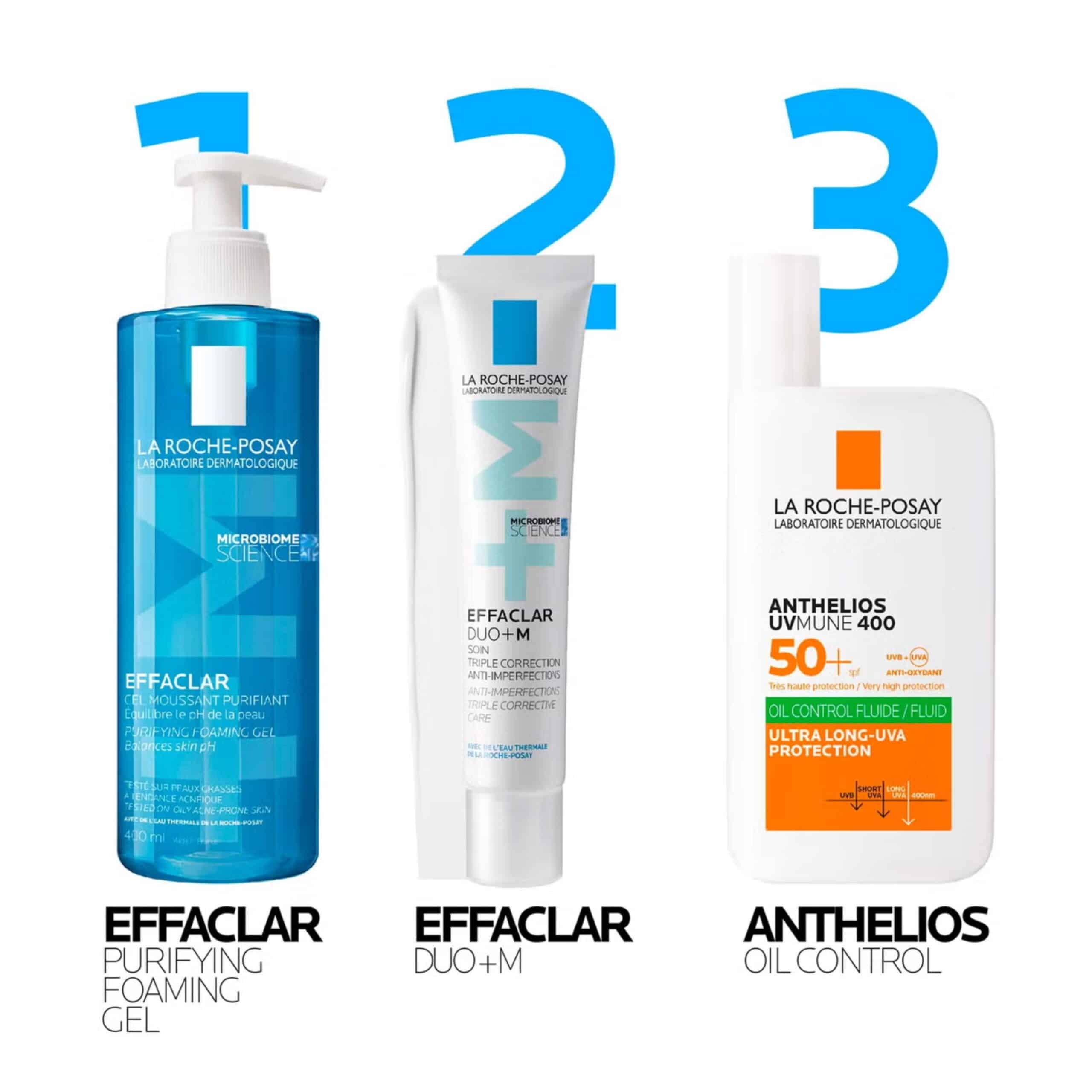
Protect from the Sun
Sun exposure can darken acne scars, making them more noticeable. Always wear sunscreen with at least SPF 30 to protect healing skin and prevent hyperpigmentation. This is particularly important if you have a tan or darker skin tone.
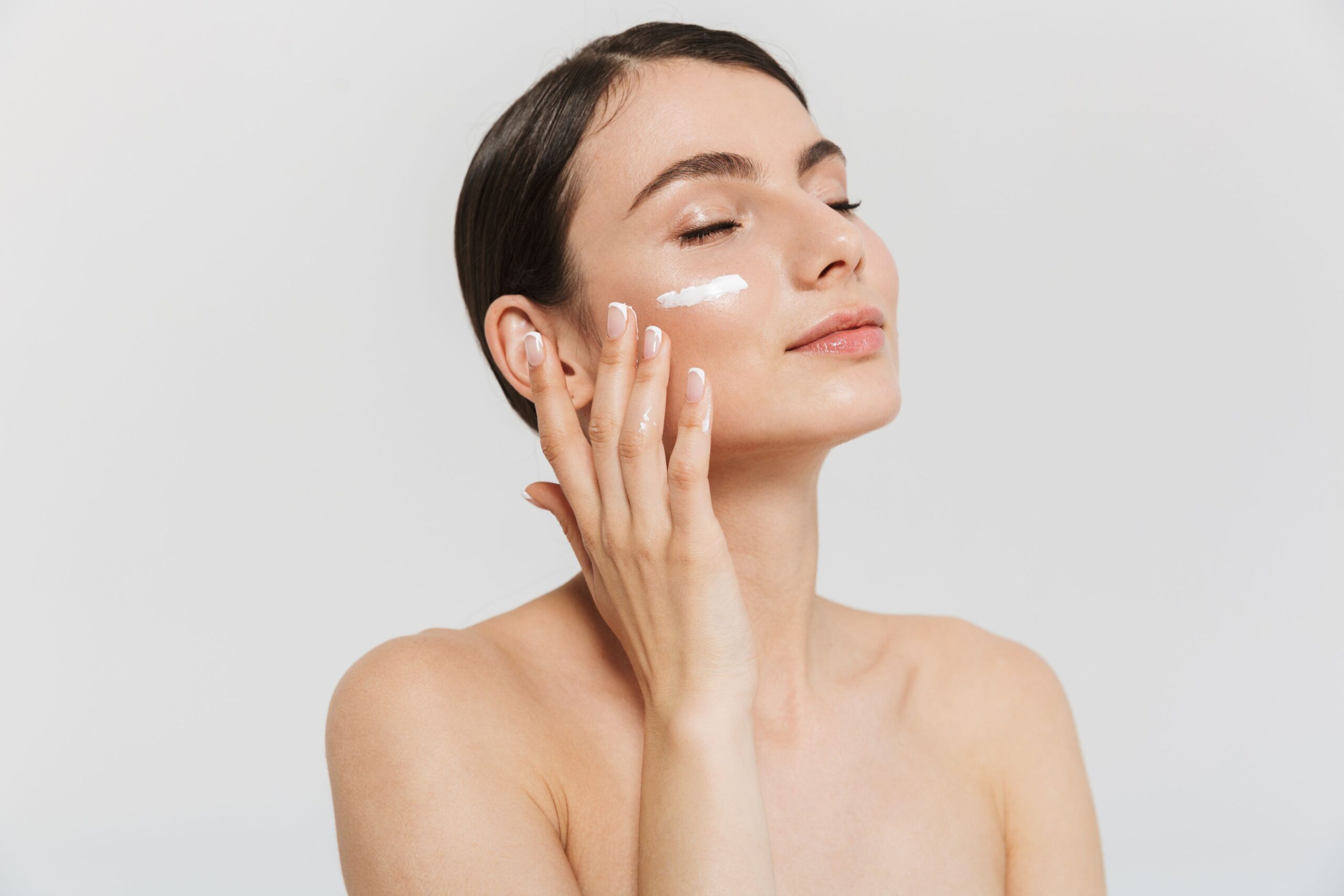
Seek Early Treatment
Early intervention is key when it comes to preventing scarring. The sooner acne is treated, the lower the chance of it leaving behind scars. Consider seeking treatment from a dermatologist if your acne is persistent or severe.
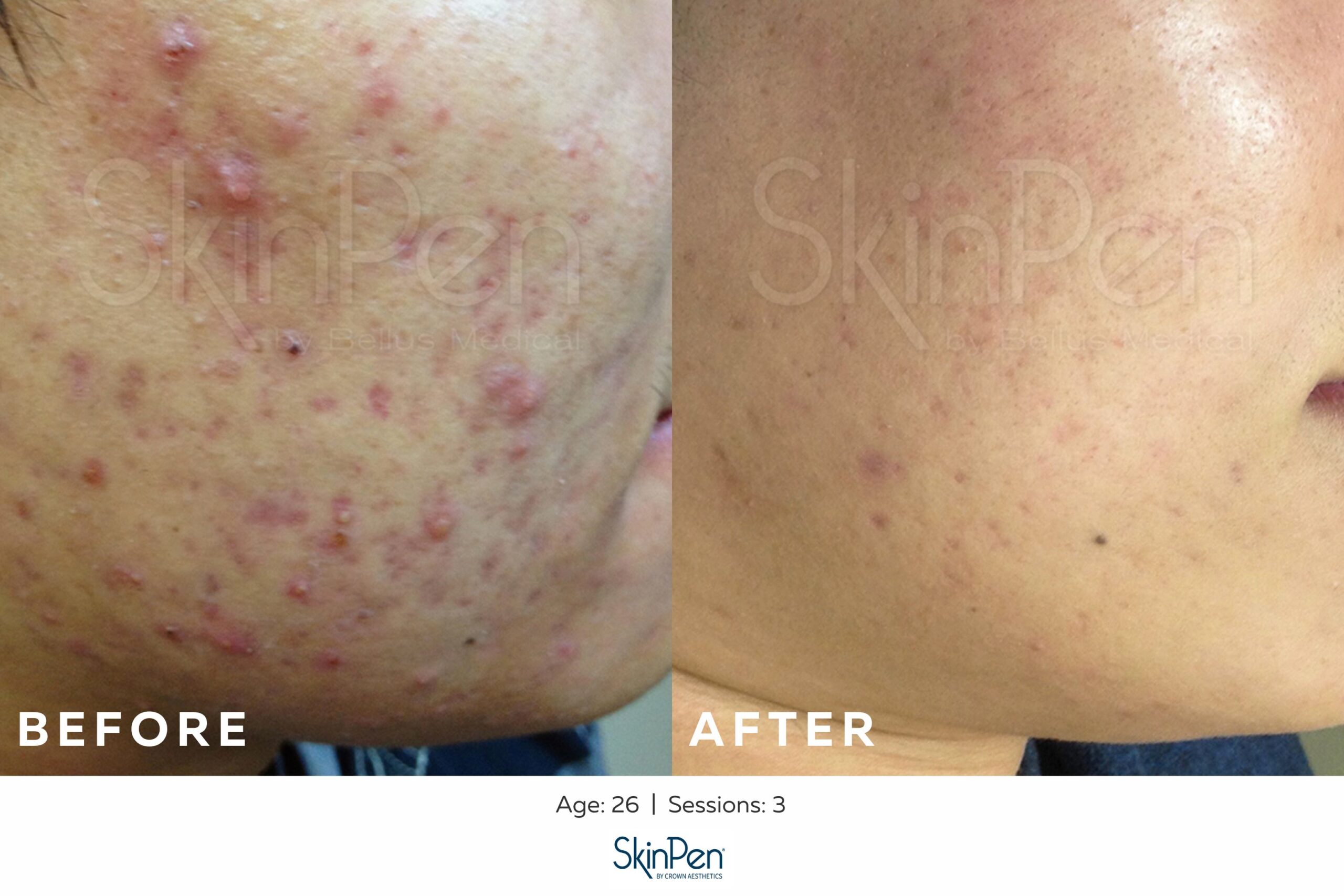
Treating Existing Acne Scars
If you already have acne scars, don’t despair. There are several effective treatments available to improve the appearance of your skin:
Skin Peels
Skin peels use acids to exfoliate the skin, helping to remove dead skin cells and stimulate the production of new skin. Over time, this can help to reduce the appearance of scars by smoothing out the skin’s texture.

Microneedling
Microneedling is an excellent treatment for acne scars, especially rolling and boxcar scars. The procedure involves tiny needles that create controlled micro-injuries in the skin, stimulating collagen production and improving skin texture.
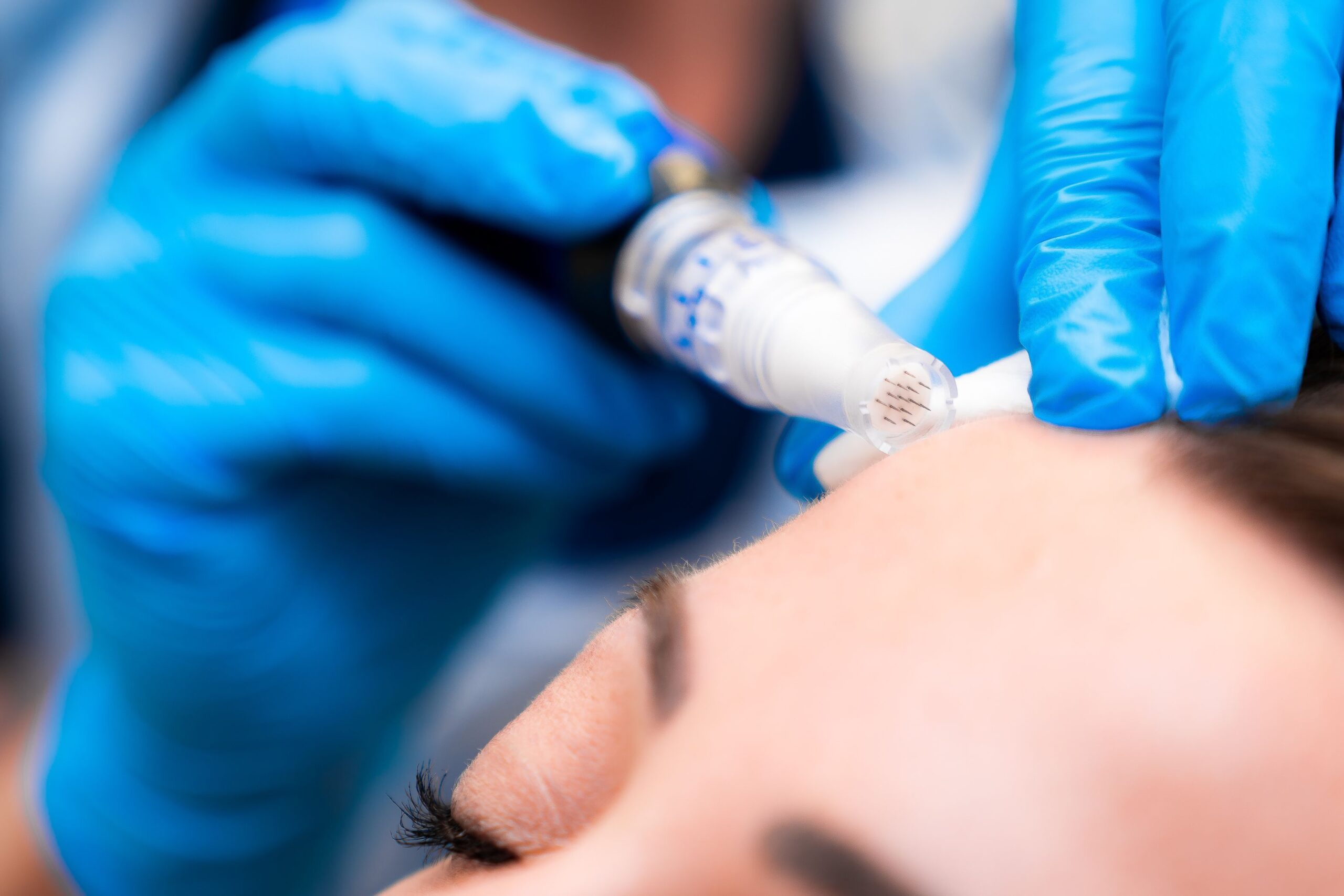
Acne Scar Treatment Package
At Freyja Medical, we offer a comprehensive Acne Scar Treatment Package, which includes a combination of treatments tailored to your skin’s needs. These may include chemical peels, microneedling, and other advanced techniques to target different types of acne scars. Click here to learn more about our Acne Scars Treatment Package.
It is a common misconception that acne scars will just go away on their own over time. While it’s possible that they may fade naturally, most acne scars require intervention—whether that be a carefully tailored and consistent daily skincare routine or more advanced treatments like microneedling and skin peels. To learn more about common acne myths and misconceptions, click here.
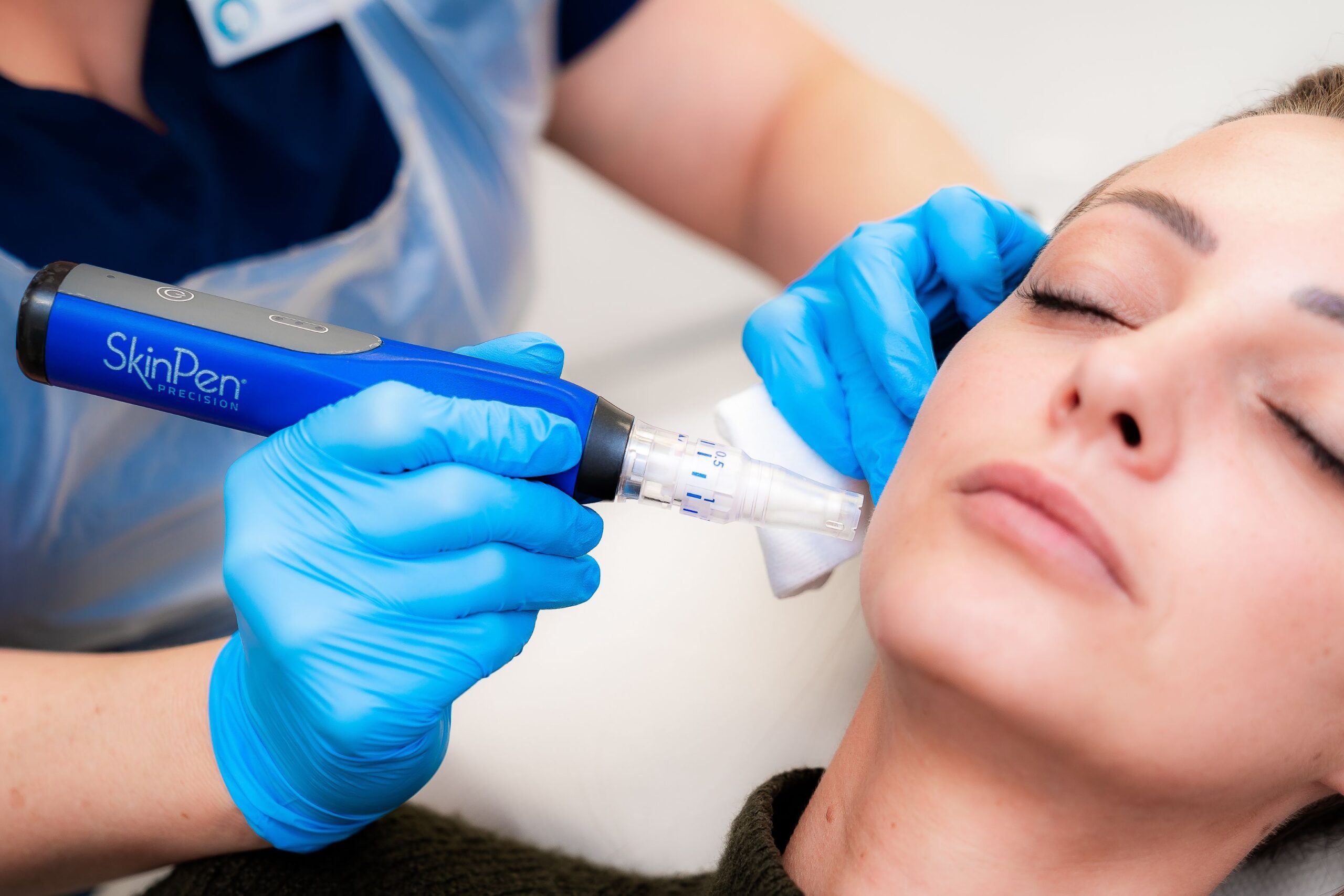
How to Book a Free Skincare Consultation
If you’re struggling with acne scars and want to explore personalised treatment options, we’re here to help!
Our team of dermatology experts will assess your skin and create a tailored treatment plan designed to help you achieve smoother, clearer skin.
To book your free skincare consultation online click here, or contact us directly:
☎️ 01978 799688

